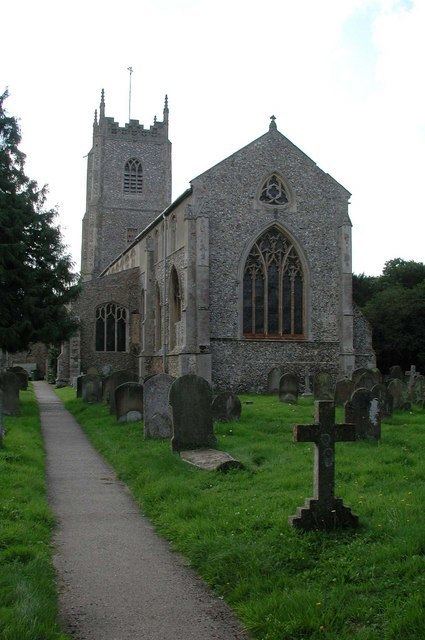OS grid reference TG0325 Sovereign state United Kingdom Local time Wednesday 2:14 PM Dialling code 01263 | Civil parish Foulsham CP Area 12.56 km² | |
 | ||
Population 860 (2001 census)1,021 (Including Bexfield 2011) Weather 15°C, Wind SW at 14 km/h, 52% Humidity | ||
Foulsham is a village and civil parish in the English county of Norfolk. The Village is 19.6 miles (31.5 km) miles west south west of Cromer, 17.7 miles (28.5 km)miles north west of Norwich and 119 miles (192 km) miles north east of London. The village lies 9.4 miles (15.1 km)miles north north east of the town of East Dereham. The nearest railway station is at Sheringham for the Bittern Line which runs between Sheringham, Cromer and Norwich. The nearest airport is Norwich International Airport.
Contents
Map of Foulsham, UK
History
The village's name derives from 'sham,' or home, and 'foul,' from the bird. Foulsham has an entry in the Domesday Book of 1085. In the great book Foulsham is recorded by the name Folsam and Folsham it is said to be in the ownership of the King before and after 1066 and Walter Gifford from the king and in the custody of Godric The survey also notes two churches, a mill, twelve cattle, four hundred pigs, fifty Goats and 13 sesters of Honey.
Puritan emigration
The village gave its name to a family of Puritan dissidents who fled England for the town of Hingham, Massachusetts, (and later Exeter, New Hampshire) and whose spelling of the name was slightly changed to Folsom. Today these American descendants of Foulsham have given rise to Folsom, California, Folsom Street in San Francisco, Folsom Prison—all named for California pioneer and New Hampshire native Joseph Libbey Folsom—as well as General Nathaniel Folsom, who represented New Hampshire in the Continental Congress.
In World War 2 RAF Foulsham played host to No. 100 Group RAF, a special operations unit who flew bombers including the Handley Page Halifax and De Havilland Mosquito in electronic warfare missions. All that remain now are a couple of dilapidated hangars and a few small outbuildings.
The village is largely unspoilt, with a number of attractive 16th and 17th century buildings.
Before Dr. Beeching closed many railway lines in the early 1960s, The village had its own railway station on the line between Dereham and Wroxham.
